Air India to integrate AirAsia India with Air India Express by the end of 2023
Radhika Bansal
03 Nov 2022
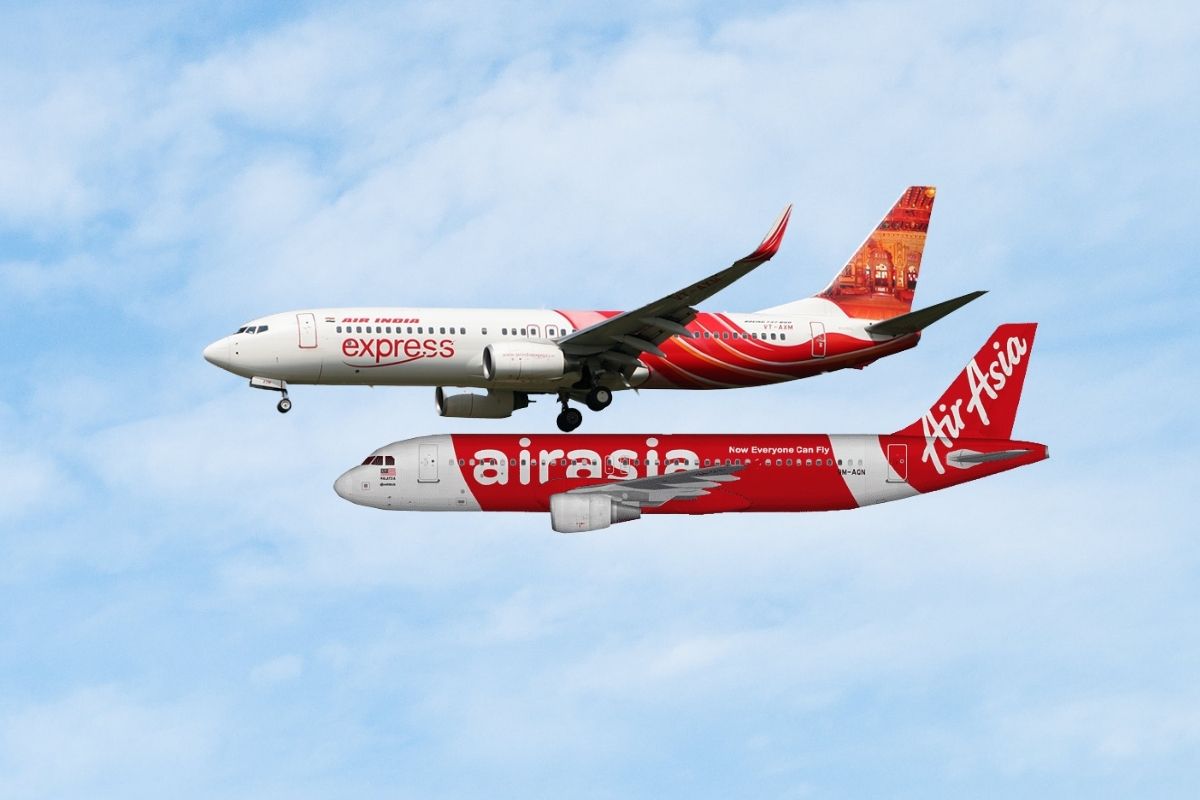
Air India said an operational review process is underway to integrate budget carrier AirAsia India with Air India Express and the merger is likely by the end of 2023.
Tata group-owned Air India has also signed agreements to have a 100% stake in AirAsia India. The carrier is a joint venture between Tata Sons and Air Asia Investment Ltd. Tata Sons has an 83.67% stake and the remaining 16.33% shareholding is with AirAsia.
ALSO READ - AirAsia India is now a fully-owned subsidiary of Air India
The merger, likely by the end of 2023, is aimed at having a single low-cost carrier for the Air India group. Post-merger, the entity will be branded as Air India Express, according to a statement.
AirAsia India is an all-Airbus operator, with a fleet of 28 A320s operating domestic flights from its Bengaluru hub
AirAsia India was launched in 2014 while Air India Express started operations back in 2005.The consolidation of the two low-cost carriers -- AirAsia India and Air India Express -- will be undertaken as part of the restructuring roadmap that is being envisioned for the Tata group's airline business, Air India said in a statement.
AirAsia India is an all-Airbus operator, with a fleet of 28 A320s operating domestic flights from its Bengaluru hub and currently flies to 18 destinations in India.
Air India Express, which was founded in 2005, flies short-haul international flights, connecting India with Southeast Asia and the Gulf region. The Kochi-headquartered carrier has a fleet of 24 Boeing 737s in operation.
Air India Express has a fleet of 24 Boeing 737s in operation.
"The assessment and implementation of the full integration process of AirAsia India and Air India Express, through a possible scheme of merger or otherwise and subject to necessary corporate approvals, is expected to take approximately 12 months, with network and other synergies to be realised progressively during that period," it said.
Currently, four airlines are part of the Tata group. They are Air India, Air India Express, AirAsia India and Vistara. The latter is a joint venture with Singapore Airlines. Tata group acquired Air India and Air India Express in January this year.
ALSO READ - Vistara – Air India merger talks with Tata Group confirmed by Singapore Airlines
In October, SIA said it was in talks with Tata over a possible merger of Vistara with Air India, stating it was seeking to “deepen the existing partnership” between both parties. Discussions on Vistara’s future are still in progress and no agreement has been reached.
ALSO READ - Tatas likely to offer a stake to Singapore Airlines, for Air India – Vistara merger
Discussions on Vistara’s future are still in progress and no agreement has been reached.
Earlier in the day, Malaysia's AirAsia Aviation Group Ltd said it has entered into a share purchase agreement to sell the remaining equity shares held in AirAsia India to Air India. Air India has signed agreements to complete the acquisition of 100% shareholding in AirAsia India.
ALSO READ - Tata Sons working on a merger between AirAsia India and Air India Express
Meanwhile, AirAsia Group said AirAsia India can use the "AirAsia" brand name for 12 months. AirAsia India has been making losses since its first commercial flight on June 12, 2014. Its net loss increased by 42% to INR 2,178 crore in FY22.
ALSO READ – AirAsia India records elevated losses in FY22
The consolidation of AirAsia India and Air India Express is expected to bring customer, revenue, cost and operational benefits through broader adoption of each airline's best practices, systems and routes, and the combined entity's greater scale, Air India said in the statement.
Air India has signed agreements to complete the acquisition of 100% shareholding in AirAsia India.
A working group has been formed to evaluate and execute the integration of the Air India group's low-cost operations, which will be co-led by AirAsia India MD and CEO Sunil Bhaskaran and Air India Express CEO Aloke Singh. The working group will report to a committee chaired by Air India MD and CEO Campbell Wilson.
About the merger of the two budget carriers, Wilson said, "We are excited to initiate the creation of a single Air India Group low-cost carrier".
"This is a key step in the rationalisation and transformation of the group, and we will be working closely with the management teams and staff throughout the process. We also look forward to the many new opportunities, a stronger AI group low-cost carrier will bring for customers and staff alike," he said.
ALSO, READ – Air India gets CCI’s approval to acquire the entire stake in AirAsia India
In June, the Competition Commission of India approved the proposed acquisition of the entire shareholding of AirAsia India by Air India. An operational review process is underway with a view to ultimately integrating AirAsia India fully with Air India Express (AIXL).
An operational review process is underway with a view to ultimately integrating AirAsia India fully with Air India Express
Consolidation of these two airlines, both of which operate as low-cost carriers, will be undertaken as part of the restructuring roadmap that is being envisioned for the Tata group’s airline business and is expected to bring customer, revenue, cost and operational benefits through broader adoption of each airlines’ best practices, systems and routes, and the combined entity’s greater scale.
While announcing that it has signed an agreement to sell the remaining stake in AirAsia India, Group CEO of AirAsia Aviation Group Bo Lingam said that since 2014, "When we first commenced operation in India, AirAsia has built a great business in India, which is one of the world's biggest civil aviation markets".
"We have had a great experience working with India's leading Tata Group. This is not the end of our relationship but the beginning of a new one as we explore new and exciting opportunities to collaborate and enhance our synergies moving forward.India will remain an important market for AirAsia and will continue to be served by our various airlines. We will use the experience and knowledge we have gained from operating in the Indian domestic market to grow the ASEAN-Indian market in logistics and passenger services to a far greater extent." Bo Lingam, CEO, AirAsia Aviation Group
Further, he said, the pandemic has allowed it to re-examine the priorities and "we felt that it was best suited for AirAsia to develop an ASEAN-only business".
The Malaysian group will continue to have airlines in Malaysia, Thailand, Indonesia and the Philippines.
Read next
AirAsia Aviation Group Limited, the holding company of Capital A's airline group (formerly known as AirAsia Investment -- part of Malaysia’s AirAsia Group) informed the bourses on November 2 that it has sold its remaining stake in the AirAsia India operations to Air India.
This means Air India has signed agreements to complete the acquisition of 100% shareholding in AirAsia India (AAI) and to subsidize it under Air India.
Following the announcements made on December 29, 2020, and January 5, 2021, on the disposal of 32.67% equity shares in AAI with AAAGL receiving USD 37,660,000 in gross proceeds, the company announced the disposal of the remaining 16.33% equity shares in AirAsia to Air India Limited, an affiliate of Tata Sons Private Limited.
ALSO READ – Tata Sons likely to merge the losses of AirAsia India with Air India before the possible merger
AirAsia India is now a fully-owned subsidiary of Air India
Meanwhile, AirAsia Group said AirAsia India can use the "AirAsia" brand name for 12 months. AirAsia India has been making losses since its first commercial flight on June 12, 2014. Its net loss increased by 42% to INR 2,178 crore in FY22.
ALSO READ – AirAsia India records elevated losses in FY22
The company said in a statement: “All customary consents and regulatory approvals have been secured. AAAGL is expected to receive INR 1,556,487,800 (equivalent to USD 18.83 million) in gross proceeds. There will be no gain or loss on the disposal as Capital A has marked the remaining 16.33% in AAI to its fair value.”
ALSO READ – AirAsia India takes short-term loans of INR 630 crore to reduce its debt burden
"Since 2014, when we first commenced operation in India, AirAsia has built a great business in India, which is one of the world's biggest civil aviation markets in the world. We have had a great experience working with India's leading Tata Group. This is not the end of our relationship, but the beginning of a new one as we explore new and exciting opportunities to collaborate and enhance our synergies moving forward."Bo Lingam, Group Chief Executive Officer, AirAsia Aviation Group
Notably, during the operations of the joint venture, AAI received certain notices from the tax authorities in India. The company has said that it will, along with its affiliates, continue to cooperate with AAI in contesting these notices.
Further, the disposal will not have any effect on Capital A share capital and substantial shareholders’ shareholding and is not expected to have any material effect on the earnings per share, or net assets per share as well as the gearing in the company for the financial year ending December 31, 2022. Also, the cash balance of AAAGL will increase by the same amount after this disposal exercise.
AirAsia Group said AirAsia India can use the "AirAsia" brand name for 12 months.
ALSO, READ – Air India gets CCI’s approval to acquire the entire stake in AirAsia India
After the transaction closes, AAAGL will not hold any equity interest in AAI and the brand license and technical services agreement between AirAsia Berhad and AAI will be terminated after 12 months from the date of termination of the shareholders' agreement between the parties or at an earlier date as may be intimated by AAI.
Air India has informed us that an operational review process is underway to ultimately integrate AirAsia India fully with Air India Express (AIXL).
“Consolidation of these two airlines, both of which operate as low-cost carriers, will be undertaken as part of the restructuring roadmap that is being envisioned for the Tata group’s airline business and is expected to bring customer, revenue, cost and operational benefits through broader adoption of each airlines’ best practices, systems and routes, and the combined entity’s greater scale."Air India
A working group has been formed to evaluate and execute the integration of the Air India Group’s low-cost operations, which will be co-led by Sunil Bhaskaran, CEO and MD, of AirAsia India and Aloke Singh, CEO, of Air India Express. The working group will report to a committee chaired by Air India MD & CEO, Campbell Wilson.
The assessment and implementation of the full integration process of AAI and AIXL, through a possible scheme of merger or otherwise and subject to necessary corporate approvals, is expected to take approximately 12 months, with network and other synergies to be realised progressively during that period.
“We are excited to initiate the creation of a single Air India Group low-cost carrier. This is a key step in the rationalisation and transformation of the Group, and we will be working closely with the management teams and staff throughout the process. We also look forward to the many new opportunities a stronger AI Group low-cost carrier will bring for customers and staff alike.”Campbell Wilson, CEO & MD, Air India
AirAsia India currently flies to 18 destinations with a market share of 5.9%. AirAsia India, which started flying in June 2014, offers scheduled air passenger transport, air cargo transport, and charter flight services in the country. It does not have international operations.
Air Asia India was the fifth-largest airline in India, with a total market share of 5.7% and with the takeover by Tata-led Air India, the entity will have a combined 15.7% share of the country's domestic passenger market.
In October 2021, Tatas emerged as the winning bidder for loss-making Air India.
AirAsia India is majority-owned by Tata Sons Private Ltd with a shareholding of 83.67% and the remaining stake is with AAIL, which is part of Malaysia's AirAsia Group.
Full-service carrier Air India and its low-cost subsidiary Air India Express were acquired by Talace Private Ltd, a wholly-owned subsidiary of Tata Sons Private Ltd, last year. Besides, Tatas operate the full-service airline Vistara in a joint venture with Singapore Airlines.
The Tatas took over Air India and Air India Express in January this year. In October 2021, Tatas emerged as the winning bidder for loss-making Air India. It offered a bid of INR 18,000 crore, comprising a cash payment of INR 2,700 crore and taking over the carrier's debt worth INR 15,300 crore.
Read next
British Airways advances the creation of environmentally friendly aviation fuel
Prashant-prabhakar
03 Nov 2022
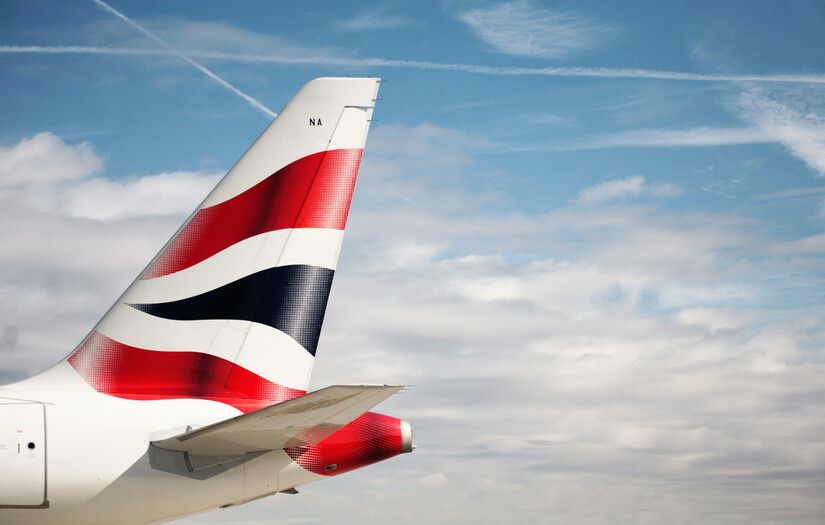
Representative | GreenAir News
British Airways has agreed to quicken the large-scale, environmentally friendly aircraft fuel manufacturing venture known as Project Speedbird that it started in 2021 with LanzaJet and Nova Pangaea Technologies. The parent company of the airline, IAG, will contribute to the next round of development work as part of the agreement. Construction could start as early as next year, and production could begin as early as 2026.
Project Speedbird
The UK's Department for Transport (DfT) 'Green Fuels, Green Skies' competition awarded Project Speedbird about £500,000 ($570,000) to support an initial feasibility assessment for the project's early stages of development. According to British Airways, the project is now finished, and the partners have sought for an extra funding from the DfT's Advanced Fuels Fund to move forward with the next stage of development.
British Airways
Located in the north-east of England, the plant would produce 102 million liters of SAF annually from agricultural and wood waste, which BA would purchase to power its planes. For its corporate and individual customers, the airline has also introduced improved web tools to calculate flight carbon emissions and lessen their influence on the environment. Customers could previously buy carbon offsets and sustainable aviation fuel using the airline's carbon offsetting tool, but thanks to a partnership with climate tech firm CHOOOSE, the new CO2llaborate program will give them more control over the ratio of SAF to verified carbon offsets they wish to buy.
Project Speedbird is another great step towards our mission to reach net zero carbon emissions by 2050 or sooner and achieve our target of using SAF for 10% of our fuel by 2030. SAF is in high demand but in short supply across the globe and so it is essential that we scale up its production as quickly as possible. With further investment and continued government support, Speedbird will be a key and pioneering project in the production of SAF here in the UKcommented the airline’s Director of Sustainability, Carrie Harris
Carrie Harris | British Airways
Utilizing a combination of cutting-edge technology, the SAF will be created using Nova Pangaea's REFNOVA® method for producing bioethanol and biochar from agricultural and wood waste. The bioethanol is then transformed using LanzaJet's unique and patented alcohol-to-jet (ATJ) technology, the first of its type in the world, to create SAF and renewable diesel.
The partners assert that the SAF produced will reduce net lifecycle emissions by 230,000 tonnes annually, or the equivalent emissions of about 26,000 domestic flights of British Airways. The facility would be able to produce more biochar and 11 million liters of renewable diesel, which together could reduce CO2 emissions by up to 770,000 tonnes annually.
Representative | Korea Bizwire
This project will deliver the first end-to-end, sustainable value chain from agricultural and wood waste to SAF in the UK. It will undoubtedly play a very important role in the growing momentum towards decarbonising our aviation sector. The support from British Airways is a vote of huge confidence in our technology and will accelerate its commercialisationSarah Ellerby, CEO at Nova Pangaea Technologies, said
With the creation of hundreds of jobs and supply chain possibilities in the North East of England as a result of Project Speedbird, the UK as a whole would gain from investments made in green technologies.
SOURCE: mediacentre.britishairways.com
COVER: GreenAir News
Read next
The Ahmedabad Airport, which Adani Airports operate has proposed to hike the user development fee (UDF) from the present INR 100 to INR 703 for domestic departure. It has also proposed to hike the UDF for international departure from the current INR 703 to INR 1,400. These numbers will increase after completing a year.
According to the proposal, starting April 2024, the UDF for domestic departure will be hiked to INR 738 and for international, it will go up to INR 1,470. Similarly, starting April 2025, the UDF will be hiked to INR 775 for domestic departure and for international it will be raised to INR 1,544.
While UDF is paid directly by passengers, hikes have been proposed for landing and parking charges that are levied on airlines which decide on airfares. AIAL has submitted its tariff card to the Airports Economic Regulatory Authority (AERA) for the “third control period” from April 1, 2021, to March 31, 2026.
Ahmedabad airport to hike its User Development Fees
Air travel from Ahmedabad might become costlier starting in February next year. In a tariff proposal submitted in February, the Ahmedabad Airport had said it estimates the present value of target revenue for airport-related services to be INR 3,854 crore.
The AIAL has also proposed a Variable Tariff Plan (VTP) for scheduled passenger airlines to increase Ahmedabad’s direct international connectivity by offering lower charges to airlines for the new sector.
In a consultation paper on tariff determination of the airport, the airport tariff authority — Airports Economic Regulatory Authority (AERA) — noted that the airport operator had ongoing capital expenditure projects and other planned works, which have resulted in a higher average revenue requirement for the third control period.
The regulator also observed that the existing traffic base is not sufficient for the complete recovery of ARR in the current control period and this would require a significant increase in tariff. The developmental projects proposed by the Ahmedabad airport are estimated to cost over INR 11,000 crore.
Mangaluru airport has proposed to hike UDF from the present INR 150 to INR 250 for both domestic departure and arrivals and increase it to INR 725 till March 2025.
While the hike proposed for Ahmedabad airport is quite steep, it's not the first time that a private airport operator has sought a raise in UDF. Mangaluru airport, also run by Adani Airports, has proposed to hike UDF from the present INR 150 to INR 250 for both domestic departure and arrivals and increase it to INR 725 till March 2025.
Earlier, the GMR Group had also proposed to hike UDF at Hyderabad international airport to INR 608 from INR 281 for domestic departures, but it was allowed to go ahead with INR 480. Ahmedabad Airport's UDF hike is also subject to the regulator's approval.
Aviation experts who have been tracking these airport charges say the regulator factors in total cost, inflation and how other airports undertook similar expansion in the past, as well as passenger growth projections to calculate UDF.
Read next
Tony Fernandes has stepped down as the acting group CEO of Capital A’s long-haul budget carrier AirAsia X citing “other commitments,” the airline announced in a note to investors.
“I’m now going to focus on delivering significant value to shareholders of Capital A, including the AirAsia Aviation Group, aviation services, logistics, travel, fintech and the e-commerce lifestyle platform,” Fernandes said in a press statement.
Having served as the non-independent non-executive director of AirAsia X, Fernandes stepped into the role of acting group CEO in July this year. Mahmood Fawzy has now been appointed as the independent non-executive director of Thai AirAsia X.
The airline in a statement in August had noted that it would be ramping up flight frequencies and would return to daily services to most destinations before 2023
AirAsia X had entered a court-overseen debt restructuring process during the pandemic. The airline completed the debt restructuring in March.
Fernandes, in a press statement, mentioned that his job had been to restart AirAsia X and bring it back to profitability and growth after the hibernation. “I am happy that this has been accomplished with a very edifying plan for 20 aircraft for the AirAsia XGroup — 13 aircraft for AirAsia X and seven for Thai AirAsia X.”
He went on to note that following the restructuring the airline has improved the cost structure, and created a cargo business, which has contributed about 20% to the airline’s revenue during the pandemic and will continue to play a vital role in its recovery.
The airline in a statement in August had noted that it would be ramping up flight frequencies and would return to daily services to most destinations before 2023, with optimised aircraft utilisation of 15 hours by December.
Tony Fernandes resigns as the acting group CEO of AirAsia X
Fernandes had to temporarily step down as AirAsia CEO in 2020 while the carrier was investigated as a potential beneficiary of the Airbus bribery scandal. His airline was ultimately cleared of any wrongdoing, and, as such, Fernandes remains one of Asia's most highly regarded entrepreneurs. As such, the 58-year-old Malaysian businessman will have no trouble keeping himself busy.
ALSO READ - AirAsia India fails to get an international permit; halts UDAN international
AirAsia India meets the condition of having 20 aircraft to fly internationally, but it has been unable to get approval as the Central Bureau of Investigation (CBI) has filed a case against top executives of AirAsia Berhad, which holds a 14% stake in the airline, for allegedly lobbying the government for overseas flight permits and violating rules that prevent foreign carriers from controlling Indian operators.
The CBI, in 2018, booked AirAsia Berhad CEO Tony Fernandes, deputy CEO Bo Lingam, and former Tata Trust managing trustee R Venkataramanan for allegedly trying to bribe government officials for easing rules for operating international flights.
Read next
The air transportation sector's best hope for achieving near-term decarbonization is sustainable aviation fuel, but numerous questions remain as plans move toward its broad usage as 100% jet fuel rather than blended with current jet fuel.
Unblended sustainable aviation fuel (SAF) emissions characteristics have not yet been examined across a variety of engine types, and there are concerns over the possible impact of its particles and chemistry on the creation of contrails.
Representative | Source
In the most current ecoDemonstrator technology programs from the firm, researchers from NASA have partnered with Boeing to assess pollutants from aircraft powered by SAF. Significantly fewer soot particles were observed during tests of a CFM International Leap 1B engine with 100% SAF on a Boeing 737-9 in 2021, while examination of just concluded tests on this year's demonstrator—a Rolls-Royce Trent 800-powered 777-200ER—is still ongoing.
We’ve got the world on the back of the aircraft, and I really wanted to get that on this ecoDemonstrator because we are now really a global assetsays Rae Lutters, ecoDemonstrator program manager
From the vault
The ten-year-old ecoDemonstrator initiative, which started in 2012 with a modest test campaign using a leased 737-800, is now a key pillar of Boeing's research and development portfolio. Boeing has kept funding the project, most recently purchasing the 777-200ER to be converted into a specialized flying technological testbed for at least the following two years.
The 100% sustainable aviation fuel (SAF)-fueled 777-200ER test bed is parked at the Everett Delivery Center with its Rolls-Royce Trent 800 engines operating at maximum thrust.
In a big van that is positioned 125 feet behind the 2022 Boeing ecoDemonstrator airplane, NASA researchers and Boeing emissions technical fellow Steve Baughcum are standing shoulder to shoulder.
Boeing
We are still early in the process of analyzing the data, but we can see the positive effects of SAF. The significantly reduced soot particles and total aerosols in the SAF emissions compared to petroleum-based conventional Jet A fuel is really encouragingBaughcum said
The ecoDemonstrator program, which combines Boeing's aerospace engineering with NASA's research skills, has been working with NASA for SAF emissions testing for the past two years. The crew also got the chance to test a 787-10 with GEnx-1B engines, and they carried out comparable testing on the 2021 Boeing ecoDemonstrator, an Alaska Airlines 737-9 with LEAP-1B engines, last year.
Boeing flight test engineers monitoring monitoring engine parameters during the emissions testing | Boeing
Testing all of these platforms with various engine technologies helps increase our understanding on how sustainable aviation fuel can have positive impacts on air quality when engines are idling at airports, and on the climate warming potential of contrails in the atmospheresaid Rich Moore, NASA’s physical research scientist
Why sustainable aviation fuel?
Sustainable aviation fuel (SAF) could probably be the only feasible and immediately available solution to hit 2050 net zero emission goals. Flying with SAF blends helps demonstrate the practicality of using alternative fuels on a daily basis, and the development of the technology will accelerate the expansion of SAF refining capacity on the industrial scale necessary for its widespread adoption in the upcoming years.
Representative | Aviation Today
Sustainable fuels are what we at Boeing believe are the best near term solution to reducing carbon emissions. This is my chance to support the industry’s commitment to net zero by 2050 and take tangible steps to ensure our airplanes are 100% SAF-capable by 2030said Bill Griffin, lead technical engineer for the Boeing ecoDemonstrator program
Moving forward
Inside the aircraft's cabin, cargo holds, or flight deck is where all other technologies that will be put to the test in the future mission are located. The 777 will go on a protracted testing program for fresh fire-extinguishing substances meant to take the place of ozone-depleting Halon 1301, which is no longer manufactured. Although alternatives to Halon have been discovered for cabins and restrooms, the industry is still compelled to recycle Halon until answers to the particular problems of fire suppression at altitude in engines, auxiliary power units, and cargo hold can be found.
A system created utilizing Jeppesen airport maps that will enable optimal taxiing operations before takeoff and after landing is one of the flight deck technologies that will be tested as part of the initiative. With the help of automatic dependent surveillance-broadcast positional data, aircraft connectivity, and electronic flight bags, the Taxi Time Information and Taxi Clearance applications will be evaluated to determine the necessary taxi time.
A system that combines airport data sources with Jeppesen airport maps will be evaluated during flight deck tests | Boeing
A more advanced head-mounted portable enhanced vision system (EVS), which was first tested in 2019, will be put through its final round of ecoDemonstrator tests in 2023.
https://www.youtube.com/watch?v=DQruQc1GVJI
Additionally, Boeing is testing broader uses of additive manufacturing on the ecoDemonstrator with parts created from recycled aluminum, an intricate Inconel engine mount, and a titanium auxiliary power unit duct panel.
SOURCE(s) : onefirstsetup.com | aviationweek.com | Boeing
COVER: Experimental Aircraft Association


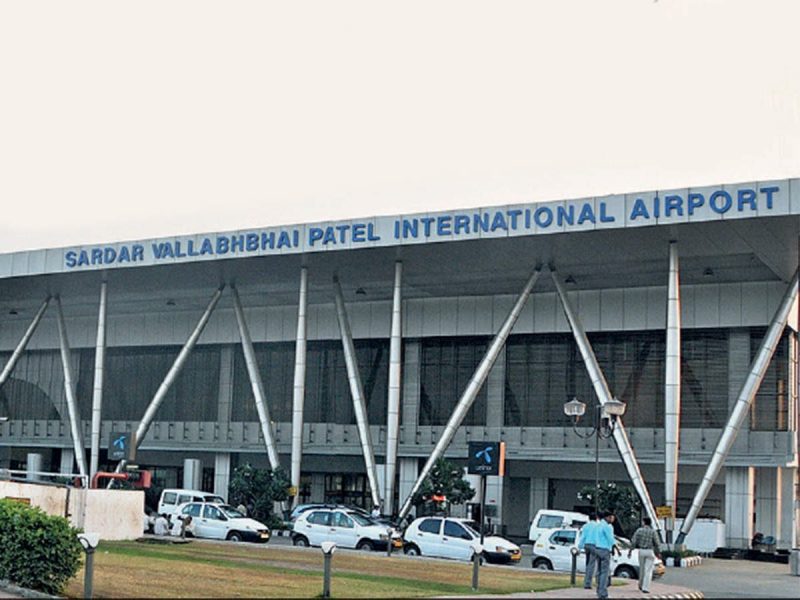
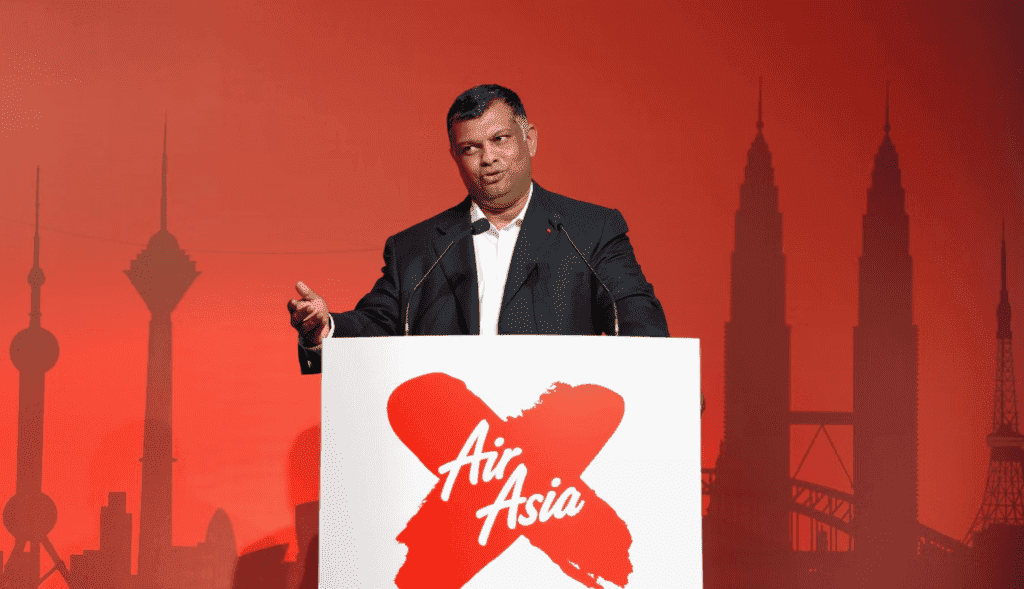
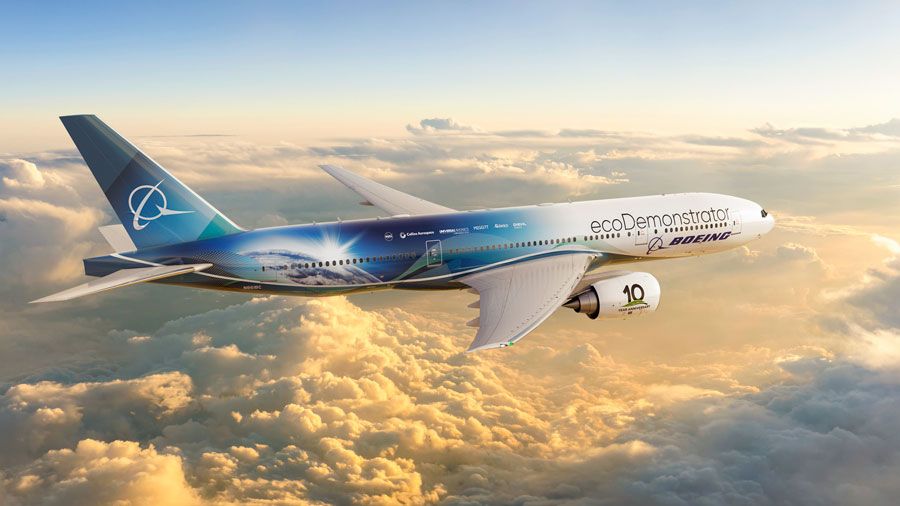
Comment